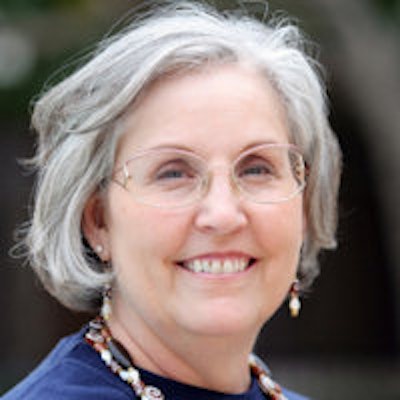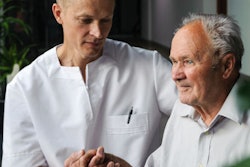
Homebound elderly adults have poor oral health and are extremely interested in home-based dental care, according to a new study in the Journal of the American Geriatrics Society.
Although there is a lot of literature about the oral health status and needs of institutionalized elderly adults, less is known about community-dwelling, homebound elderly adults, the study authors noted. They recommended that medical professionals should partner with the dental community to develop programs for these adults.
"The limited studies all indicate that there is high unmet need in this population," wrote the study authors, who are associated with various health institutions and schools in New York (J Am Geriatr Soc, January 2015, Vol. 63:1, pp. 151-157).
The study assessed the dental and oral health status of homebound elderly adults between November 2010 and April 2011 at the Mount Sinai Visiting Doctors (MSVD) program in New York City. Medicare defines homebound as the ability to leave home only with great difficulty and for absences that are infrequent or short duration.
The MSVD program, where physicians and nurse practitioners provide care, is the largest academic home-based primary care program for homebound elderly adults in the U.S. The researchers included 125 subjects age 50 or older who had been enrolled in the program for at least six months and were mentally competent enough to provide informed consent.
Highlighting a serious problem
Of the 125 subjects examined by the research team, 95 were dentate and 30 were completely edentulous. Among the dentate patients, the mean number of teeth per subject was about 14. Among these, 78% had at least one decayed tooth, 40% needed restorative care, and 45% needed extractions. Mild tissue abnormalities were found in more than half of the patients, with 13% having candidiasis, 21% with noncandidal white lesions, and 13% having mucosal ulcerous lesions.
Of the subjects who were edentulous in one or both arches, 18% did not have appropriate dentures, and among those wearing dentures, 28% needed replacements. In addition, 96% of the subjects reported that no dental professional had visited them at home since they had become homebound, and 61% said they last visited a dentist more than three years ago.
One-third (33%) complained of current pain or discomfort in the oral cavity, nearly 28% complained about halitosis, 50% had chewing limitations, and 59% of denture wearers were dissatisfied with their current dentures. Almost a quarter of participants said that they felt nervous or uncomfortable because of problems with their teeth or did not want to eat in front of people. Less than half were able to eat comfortably.
Overall, nonwhites had poorer perceived oral health, and these problems existed regardless of medical diagnoses and the number of comorbidities, the authors reported. The vast majority (93%) of patients said that they would be interested in home-based dental care.
"This needs assessment overwhelmingly suggests that the oral health status of the homebound elderly population in New York City is poor, that the vast majority does not have access to dental care, and that lack of basic dental care negatively affects the quality of life and well-being of these individuals," the authors wrote.
The process
The research team, which included a dental examiner, a trained recorder, and a third team member who assisted with any other aspects as needed, visited the subjects in their homes. The subjects' demographic characteristics, medical comorbidities, and length of time in the MSVD program were all considered as part of the study.
The oral exam included a soft-tissue examination, assessment of oral hygiene, dental caries exam, periodontal exam, and a denture assessment. The researchers measured self-reported dental use, self-identified dental problems and needs, and the participant's level of interest in professional home-based oral and dental care.
They also asked subjects to fill out the Geriatric Oral Health Assessment Index (GOHAI), a 12-item questionnaire designed to measure frequency of self-reported oral health problems in elderly adults. Out of the 125 subjects included in the study, 115 answered all the GOHAI questions.
Integration with medical care
Oral healthcare services for homebound elderly adults should be provided regardless of their diagnoses, the study authors noted, and they stressed the importance of integrating oral health into medical care. The two are correlated, and in older adults, interventions to improve oral health may reduce risk of illness and mortality, they added.
Specifically discussing the dental profession, they wrote that there is a lack of expertise in geriatric care. Formal advanced education programs are lacking, as geriatrics is not recognized as a specialty in dentistry.
To fill this gap, the authors recommended programs designed to meet the oral needs of this population, including the following:
- Dental school curricula or practical experiences in home-based dentistry
- Development of a specialized postgraduate fellowship, including the homebound population as an underserved group with loan forgiveness
- Direct clinical programs providing oral health screenings and dental treatments in individuals' homes
Training dental hygienists, nondental medical professionals, or even trained nonclinical providers to administer oral health assessments and education on general oral health and hygiene could be cost-effective, they noted.
"This could effectively address the large unmet need for general oral health education for a large number of individuals and prevent further oral morbidity," the study authors concluded. "Dissemination will be regionally based, because individual state policies vary regarding whether dental hygienists may independently see individuals in their homes."



















